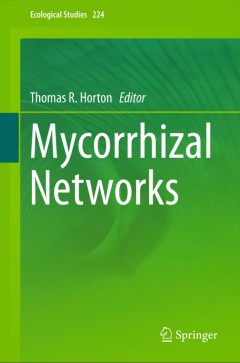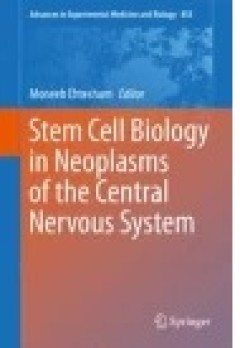Filter by

Murine Models, Energy Balance, and Cancer
This volume provides a transdisciplinary and translational review of many of the leading murine models used to study the mechanisms, mediators and biomarkers linking energy balance to cancer. It provides a review of murine models that should be of interest to basic, clinical and applied research investigators as well as nutrition scientists and students that work in cancer prevention, cancer co…
- Edition
- 1
- ISBN/ISSN
- 978-3-319-16732-9
- Collation
- XV, 295
- Series Title
- Energy Balance and Cancer
- Call Number
- -

Myeloid-Derived Suppressor Cells and Cancer
The book starts with an introduction to and history of myeloid-derived suppressor cells (MDSCs), followed by a description of their differentiation, their role in the tumour microenvironment and their therapeutic targeting. It closes with an outlook on future developments. In cancer patients, myelopoiesis is perturbed and instead of generating immunogenic myeloid cells (such as dendritic cells,…
- Edition
- 1
- ISBN/ISSN
- 978-3-319-26819-4
- Collation
- IX, 102
- Series Title
- SpringerBriefs in Immunology
- Call Number
- -

Mycorrhizal Networks
The last 25 years have seen significant advances in our understanding of the mycorrhizal fungi that colonize most of the world’s plants, and the mycorrhizal networks that form and extend into the soil beyond plant roots. In addition to a thorough review of recent research on mycorrhizal networks, this book provides readers with alternative perspectives. The book is organized into three sectio…
- Edition
- 1
- ISBN/ISSN
- 978-94-017-7394-2
- Collation
- XVIII, 286
- Series Title
- Ecological Studies
- Call Number
- -

Natural Killer Cells
To celebrate the 40th anniversary of the discovery of Natural Killer (NK) cells, this volume focuses on the recent advances in our understanding of NK cell development and differentiation and their acquisition of functional properties, as well as the latest models for NK-cell analysis in mice and applications in clinical medicine. NK cells have travelled a circuitous path from their initial des…
- Edition
- 1
- ISBN/ISSN
- 978-3-319-79554-6
- Collation
- VIII, 247
- Series Title
- Current Topics in Microbiology and Immunology
- Call Number
- -

Natural History Dioramas : History, Construction and Educational Role
This book brings together in a unique perspective aspects of natural history dioramas, their history, construction and rationale, interpretation and educational importance, from a number of different countries, from the west coast of the USA, across Europe to China. It describes the journey of dioramas from their inception through development to visions of their future. A complementary journey …
- Edition
- 1
- ISBN/ISSN
- 978-94-017-9495-4
- Collation
- X, 289
- Series Title
- -
- Call Number
- -

Encyclopedia of Astrobiology
The interdisciplinary field of Astrobiology constitutes a joint arena where provocative discoveries are coalescing concerning, e.g. the prevalence of exoplanets, the diversity and hardiness of life, and its increasingly likely chances for its emergence. Biologists, astrophysicists, biochemists, geoscientists and space scientists share this exciting mission of revealing the origin and commonalit…
- Edition
- -
- ISBN/ISSN
- 978-3-662-44185-5
- Collation
- 219 b/w illustrations, 484 illustrations in colour
- Series Title
- -
- Call Number
- -

Natural Disturbances and Historic Range of Variation
This book discusses the historic range of variation (HRV) in the types, frequencies, severities and scales of natural disturbances, and explores how they create heterogeneous structure within upland hardwood forests of the Central Hardwood Region (CHR). The book was written in response to a 2012 forest planning rule which requires that national forests to be managed to sustain ‘ecological int…
- Edition
- 1
- ISBN/ISSN
- 978-3-319-21526-6
- Collation
- XI, 400
- Series Title
- Managing Forest Ecosystems
- Call Number
- -

Stem Cell Biology in Neoplasms of the Central Nervous System
A volume like this is beyond the scope of one person/editor’s effort. There are countless hours spent contacting authors, reviewing submissions, and cross- checking references and publication permissions—tedious work that can be draining but remains essential for a project like this to succeed. This project would have failed miserably if it were not for the tireless effort and dedication …
- Edition
- -
- ISBN/ISSN
- 978-3-319-16537-0
- Collation
- -
- Series Title
- -
- Call Number
- -

The Vertebrate Integument Volume 2 Structure, Design and Function
The emphasis in this volume is on the structure and functional design of the integument. The book starts with a brief introduction to some basic principles of physics (mechanics) including Newton’s Three Laws of Motion. These principles are subsequently used to interpret the problems animals encounter in motion. It is in only the last 40 or so years that we have begun to understand how imp…
- Edition
- -
- ISBN/ISSN
- 978-3-662-46005-4
- Collation
- -
- Series Title
- -
- Call Number
- -

Multimedia Signals and Systems
This book is designed for students, professionals and researchers in the field of multimedia and related fields with a need to learn the basics of multimedia systems and signal processing. Emphasis is given to the analysis and processing of multimedia signals (audio, images, and video). Detailed insight into the most relevant mathematical apparatus and transformations used in multimedia signal …
- Edition
- 1
- ISBN/ISSN
- 978-3-319-23948-4
- Collation
- XXVIII, 391
- Series Title
- -
- Call Number
- -
 Computer Science, Information & General Works
Computer Science, Information & General Works  Philosophy & Psychology
Philosophy & Psychology  Religion
Religion  Social Sciences
Social Sciences  Language
Language  Pure Science
Pure Science  Applied Sciences
Applied Sciences  Art & Recreation
Art & Recreation  Literature
Literature  History & Geography
History & Geography